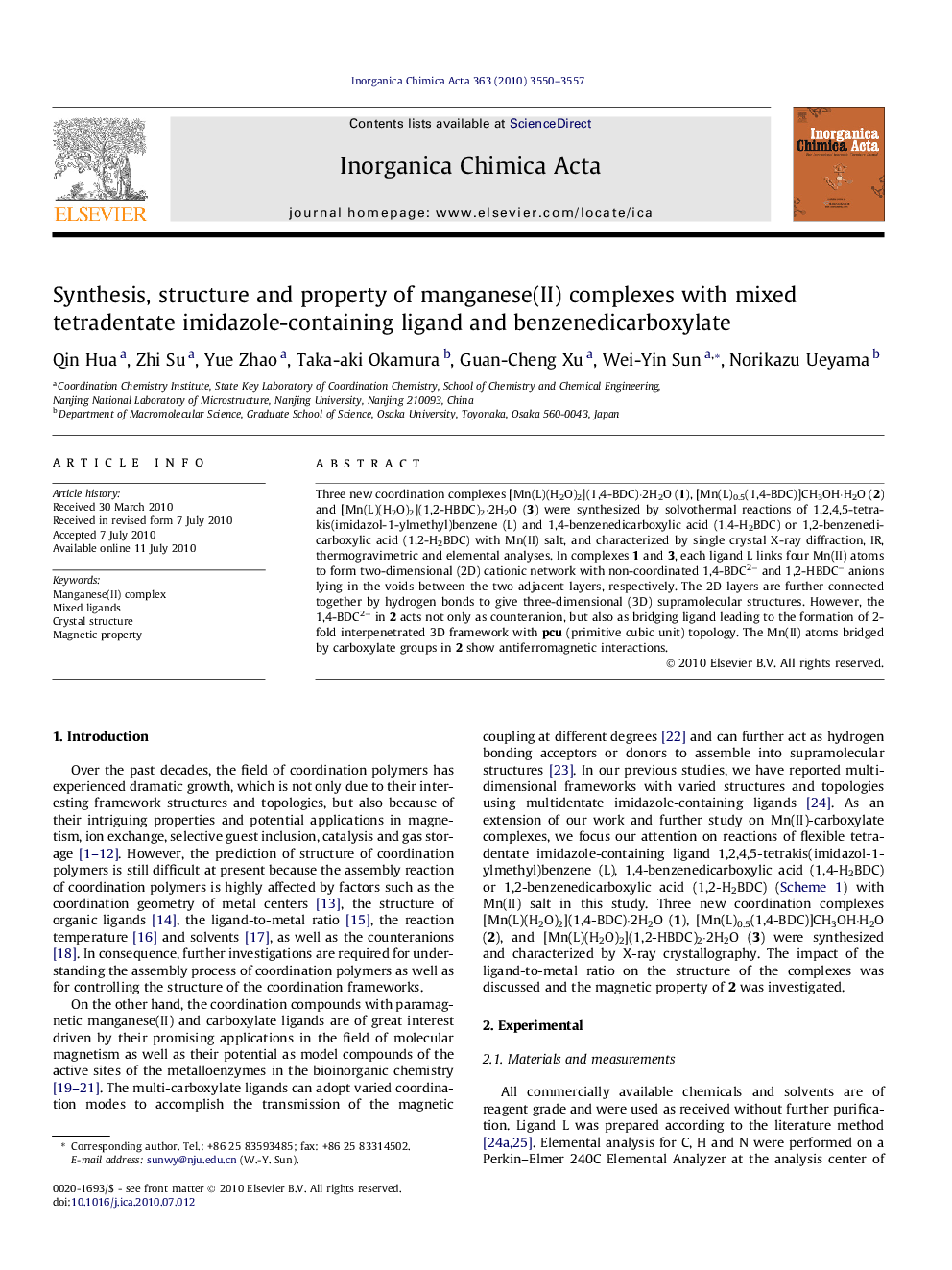| Article ID | Journal | Published Year | Pages | File Type |
|---|---|---|---|---|
| 1311205 | Inorganica Chimica Acta | 2010 | 8 Pages |
Three new coordination complexes [Mn(L)(H2O)2](1,4-BDC)·2H2O (1), [Mn(L)0.5(1,4-BDC)]CH3OH·H2O (2) and [Mn(L)(H2O)2](1,2-HBDC)2·2H2O (3) were synthesized by solvothermal reactions of 1,2,4,5-tetrakis(imidazol-1-ylmethyl)benzene (L) and 1,4-benzenedicarboxylic acid (1,4-H2BDC) or 1,2-benzenedicarboxylic acid (1,2-H2BDC) with Mn(II) salt, and characterized by single crystal X-ray diffraction, IR, thermogravimetric and elemental analyses. In complexes 1 and 3, each ligand L links four Mn(II) atoms to form two-dimensional (2D) cationic network with non-coordinated 1,4-BDC2− and 1,2-HBDC− anions lying in the voids between the two adjacent layers, respectively. The 2D layers are further connected together by hydrogen bonds to give three-dimensional (3D) supramolecular structures. However, the 1,4-BDC2− in 2 acts not only as counteranion, but also as bridging ligand leading to the formation of 2-fold interpenetrated 3D framework with pcu (primitive cubic unit) topology. The Mn(II) atoms bridged by carboxylate groups in 2 show antiferromagnetic interactions.
Graphical abstractSolvothermal reactions of Mn(II) salt with tetradentate imidazole-containing ligand in the presence of different benzenedicarboxylic acid were carried out and complexes with different structure were obtained. The effect of the metal-to-ligand ratio was discussed. The magnetic property of complex 2 was explored.Figure optionsDownload full-size imageDownload as PowerPoint slide
